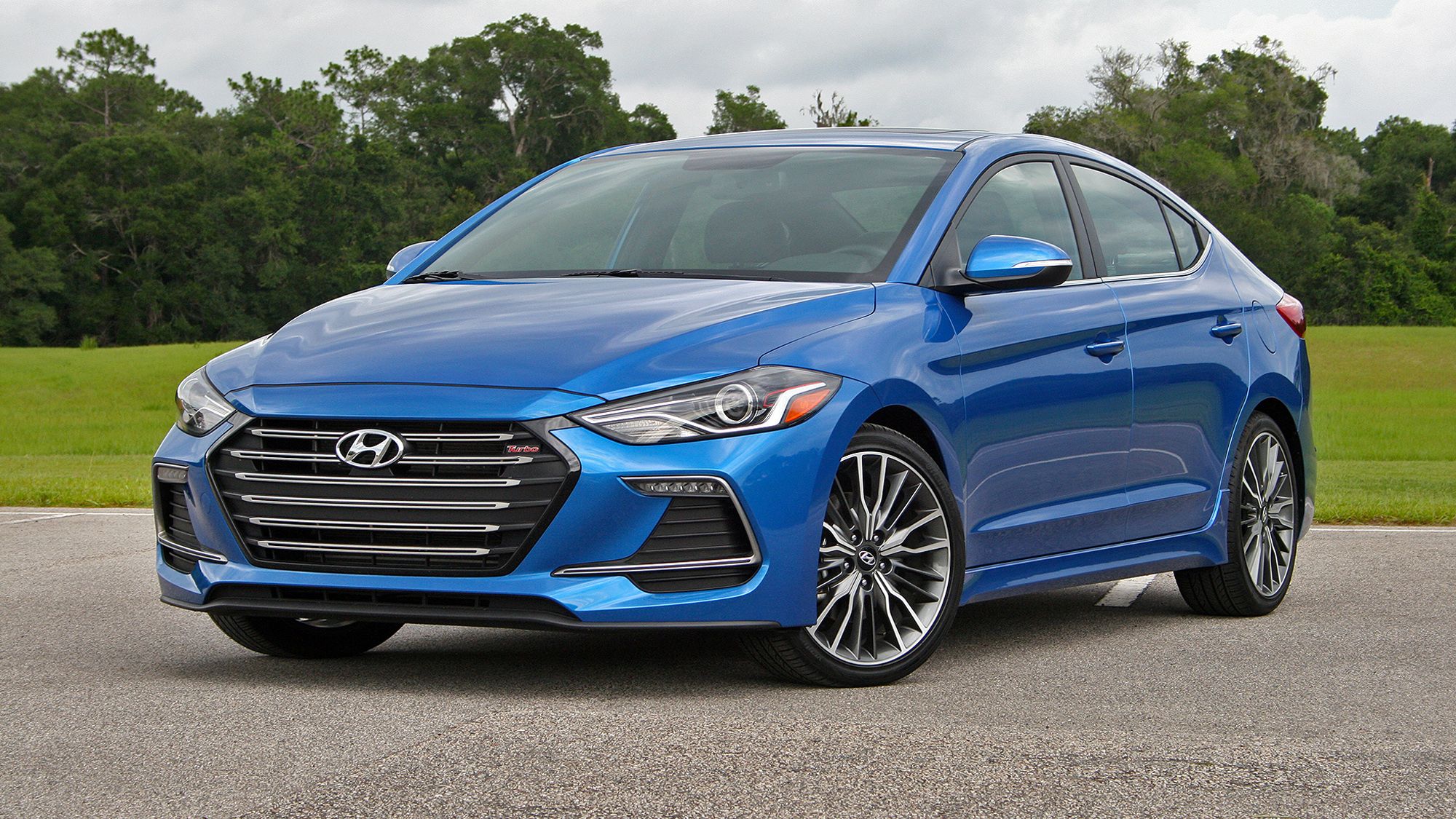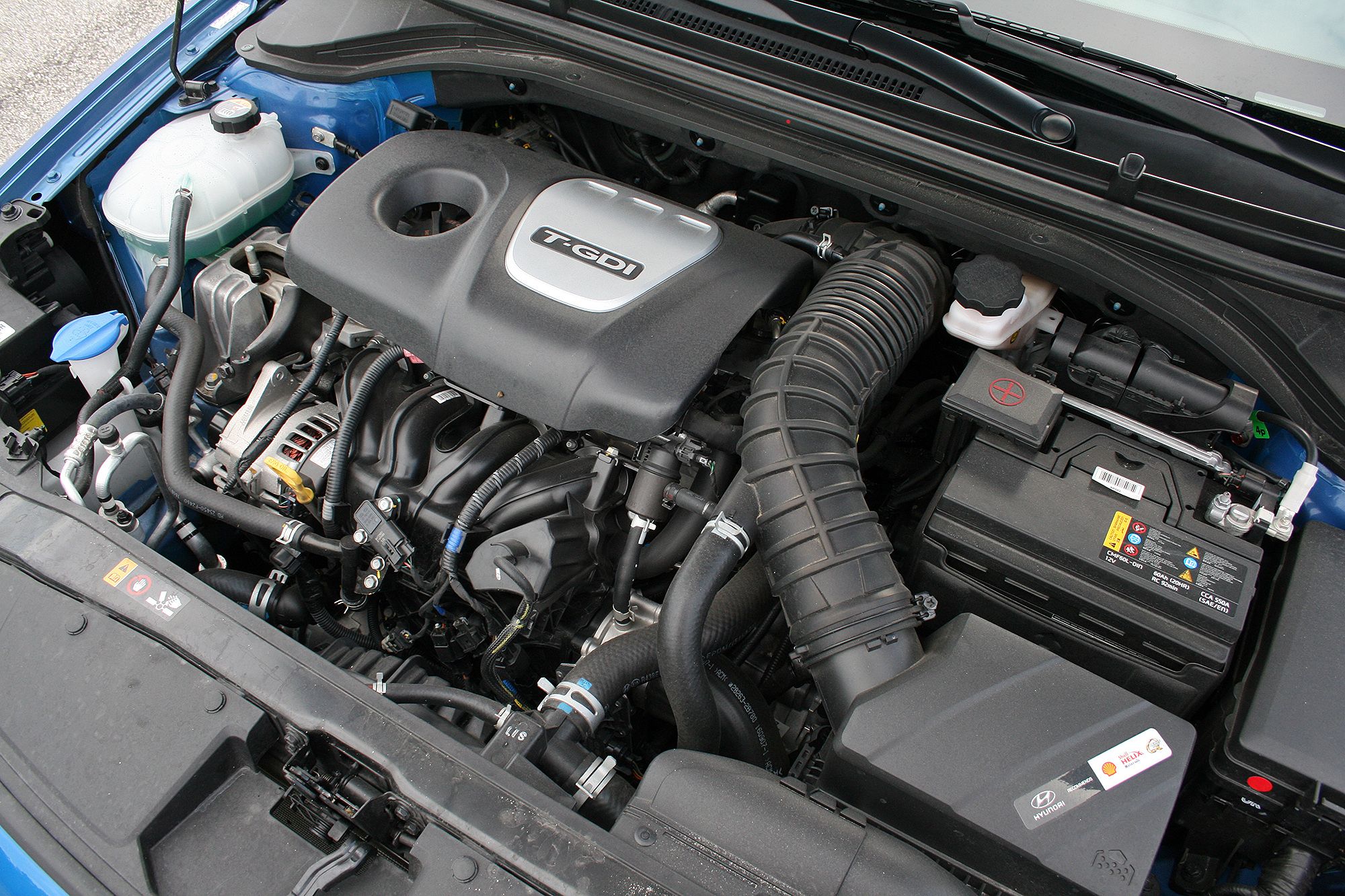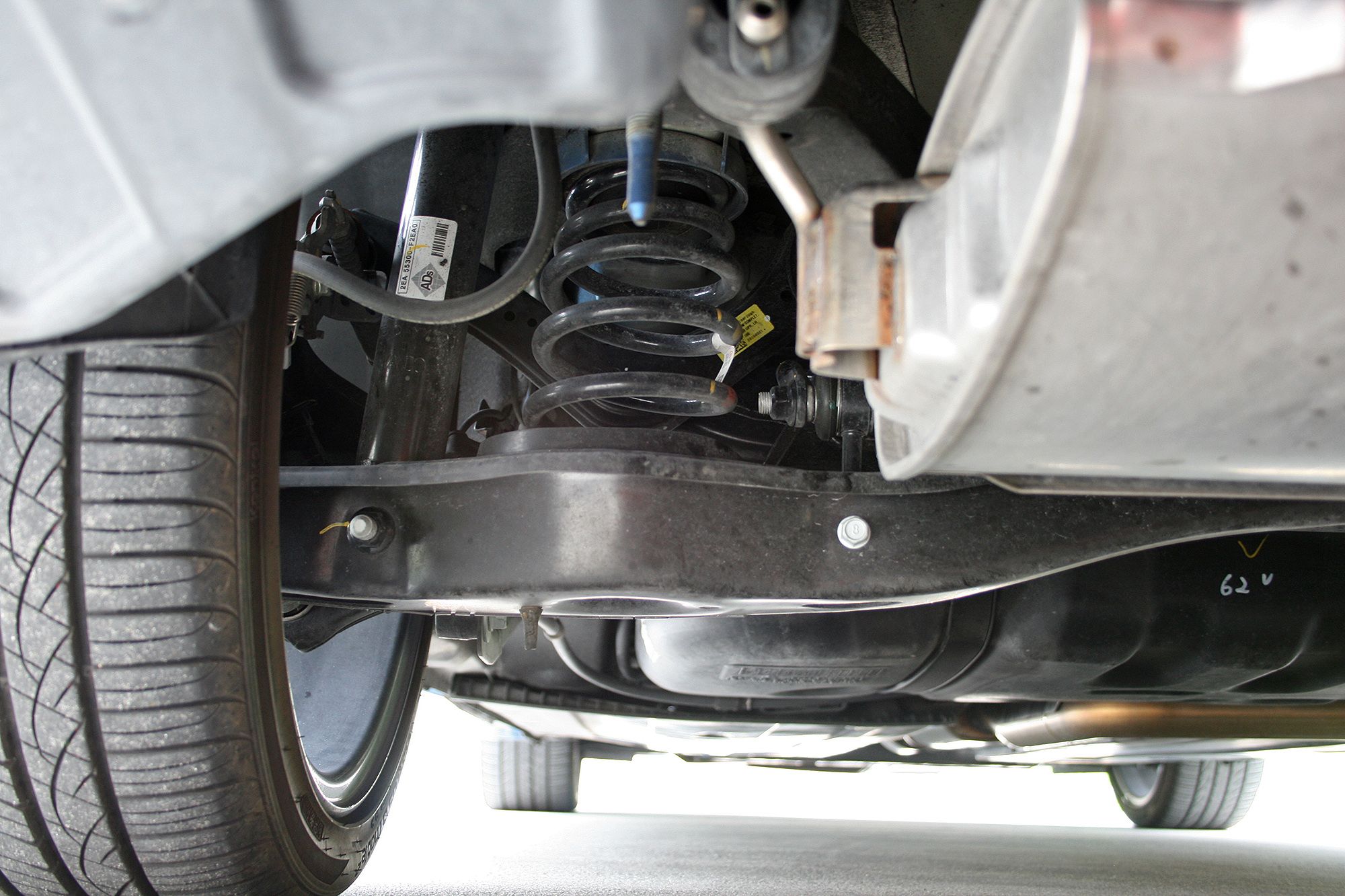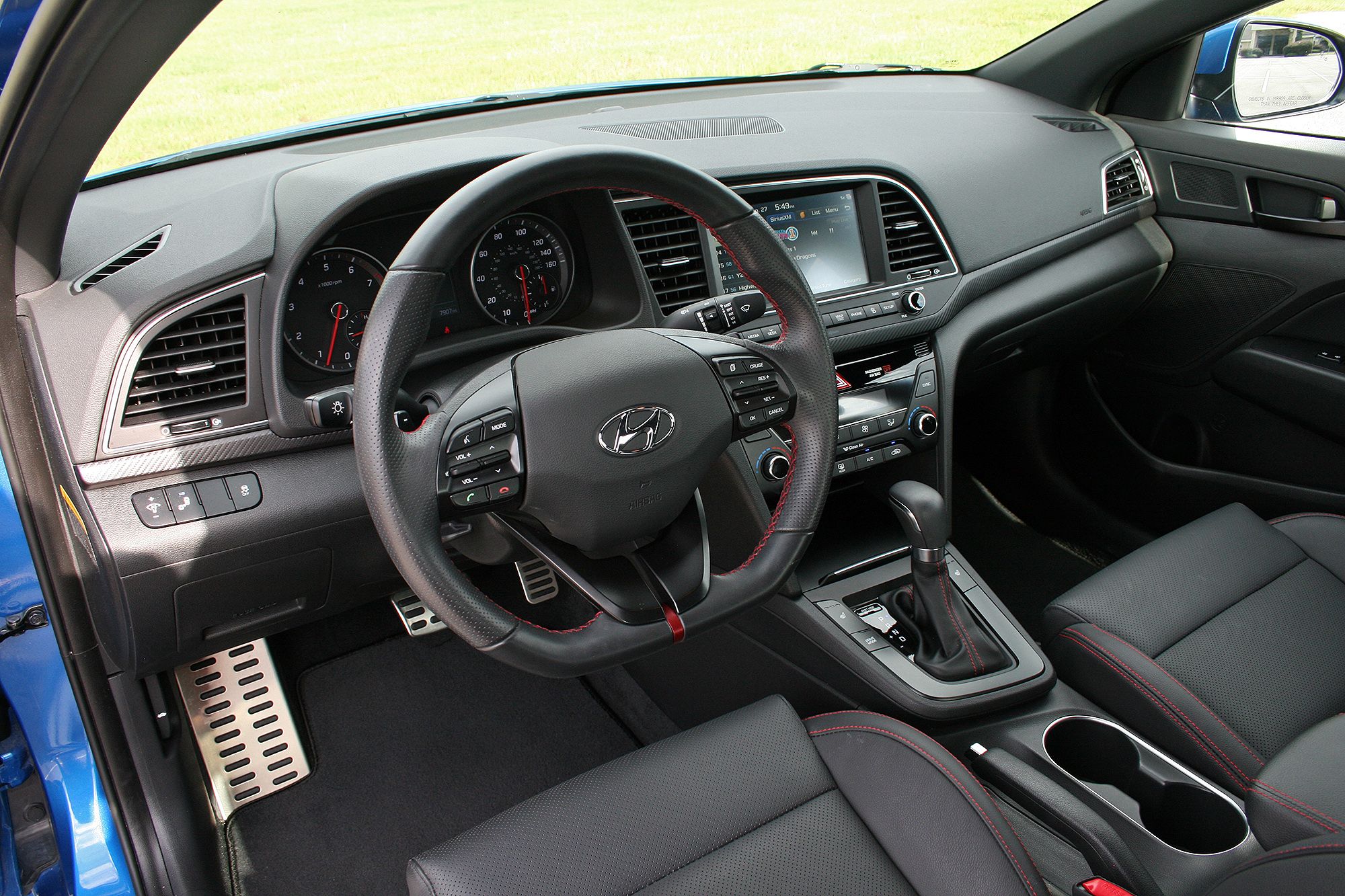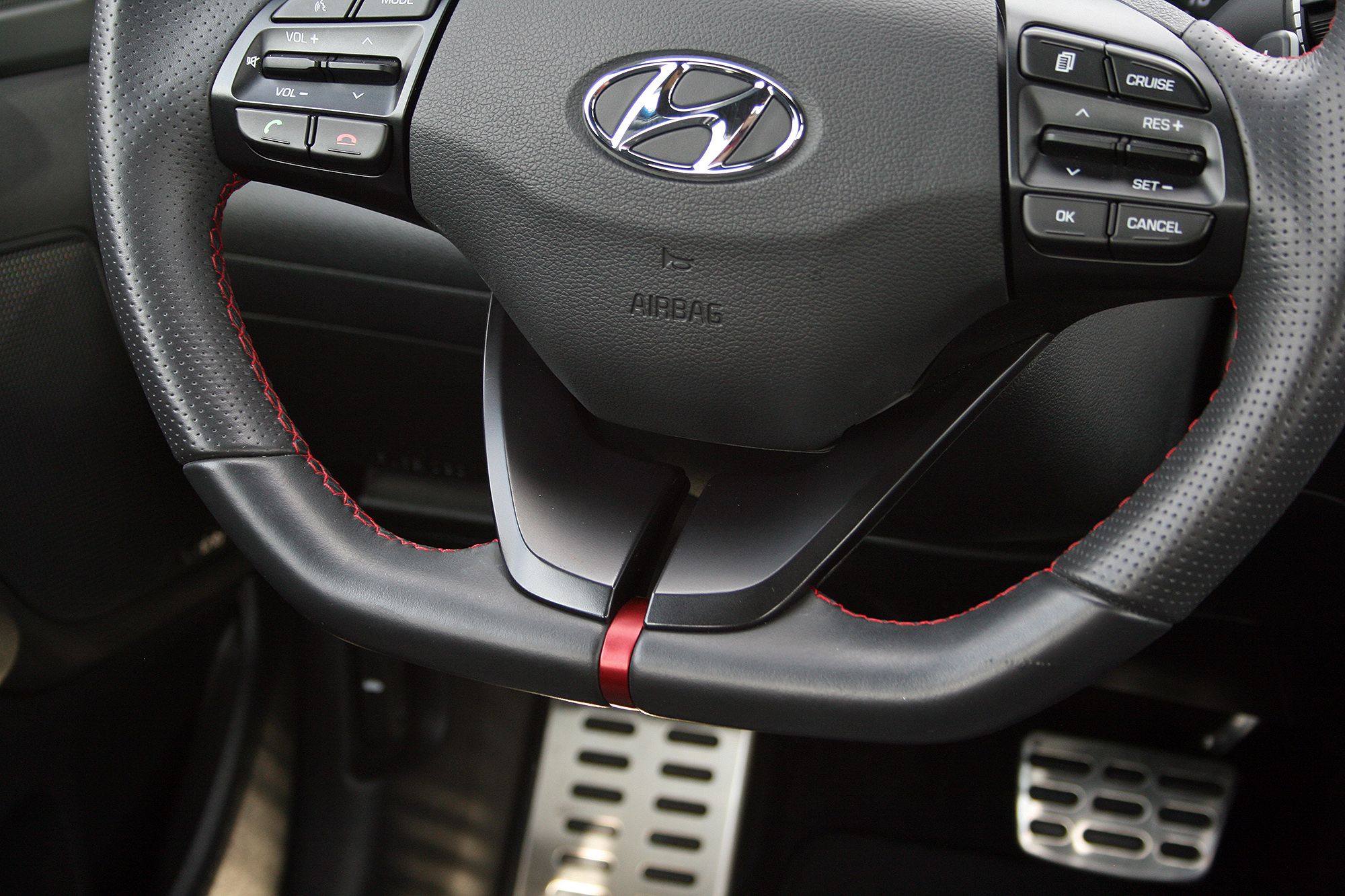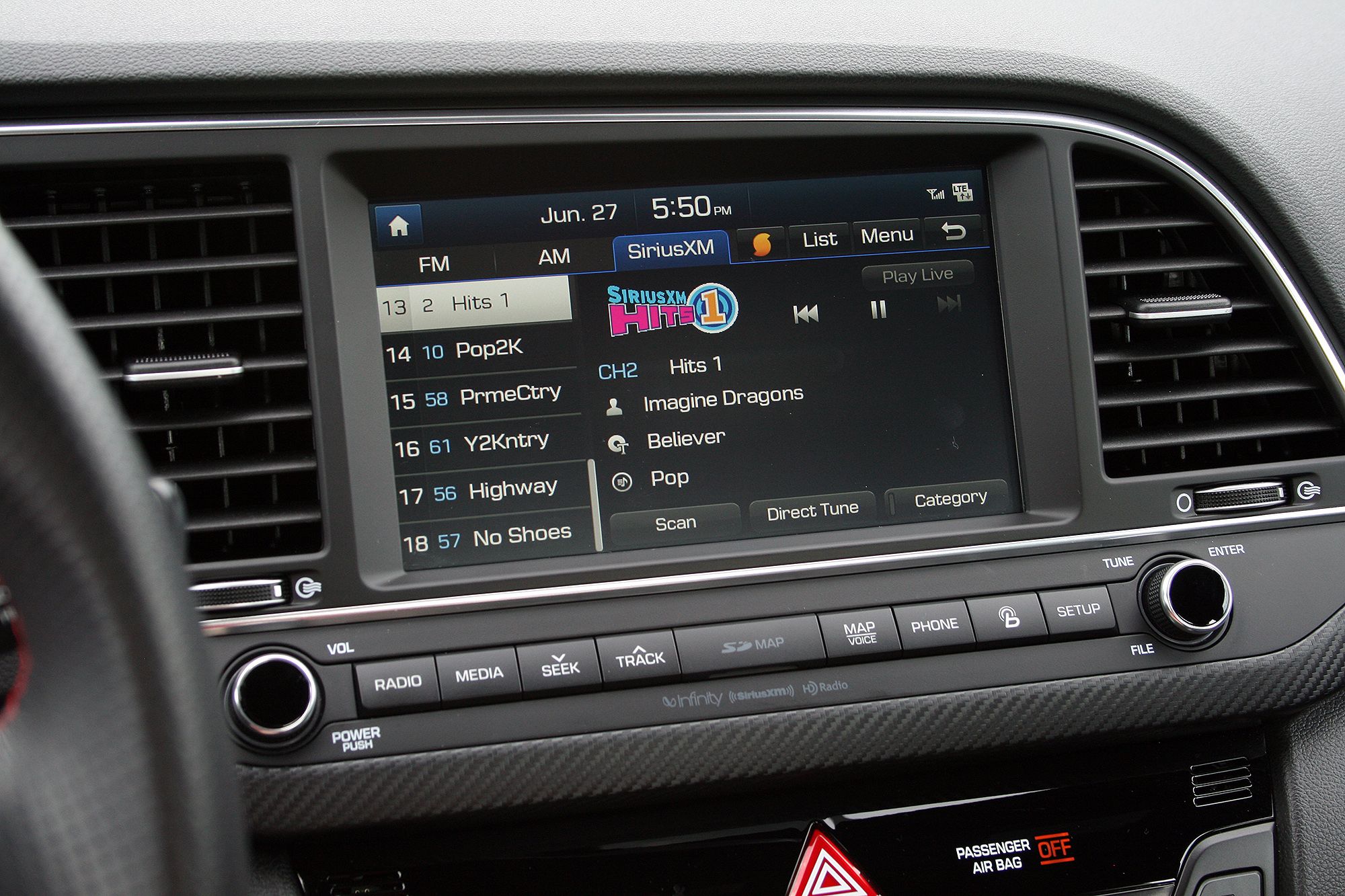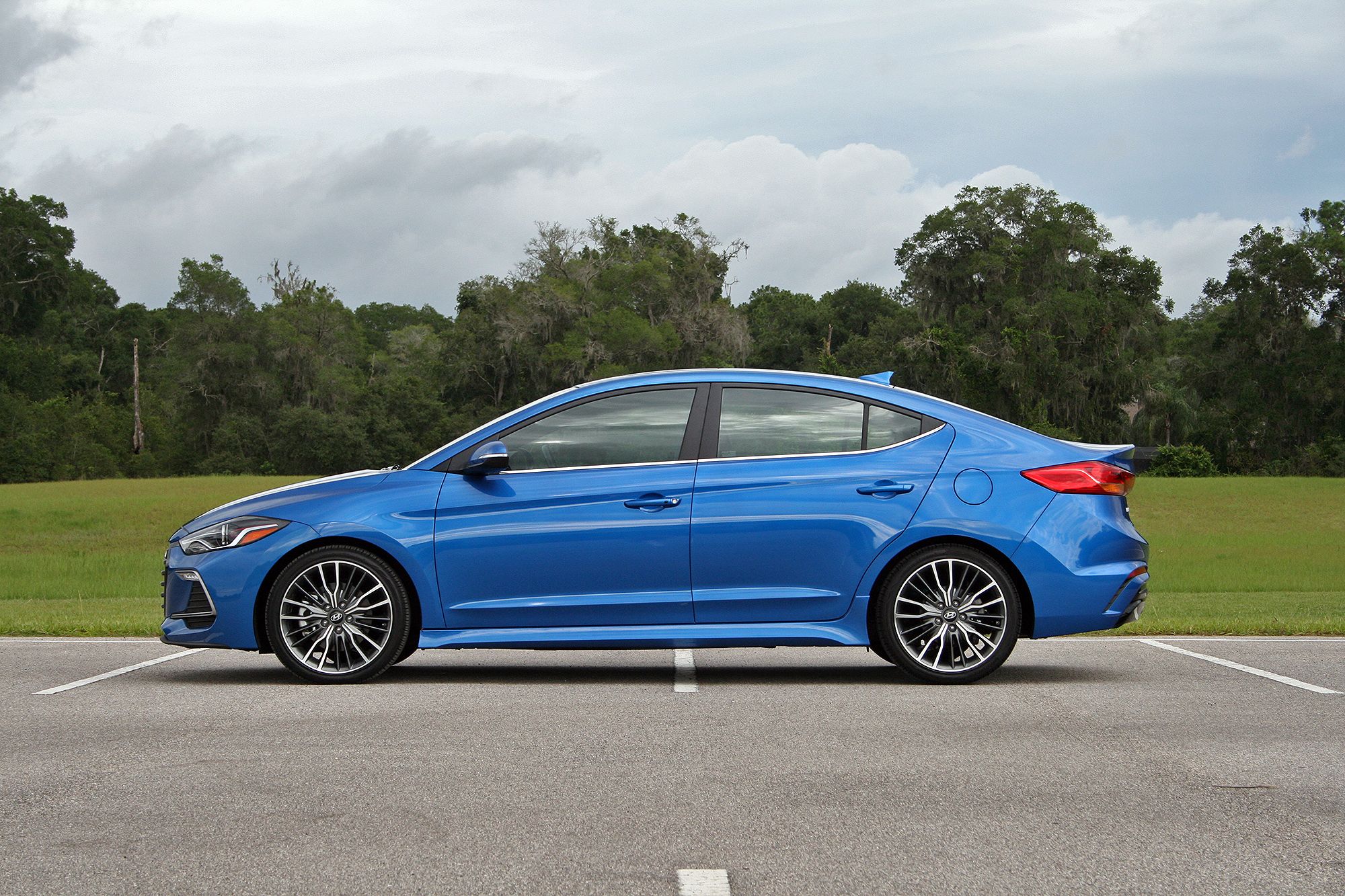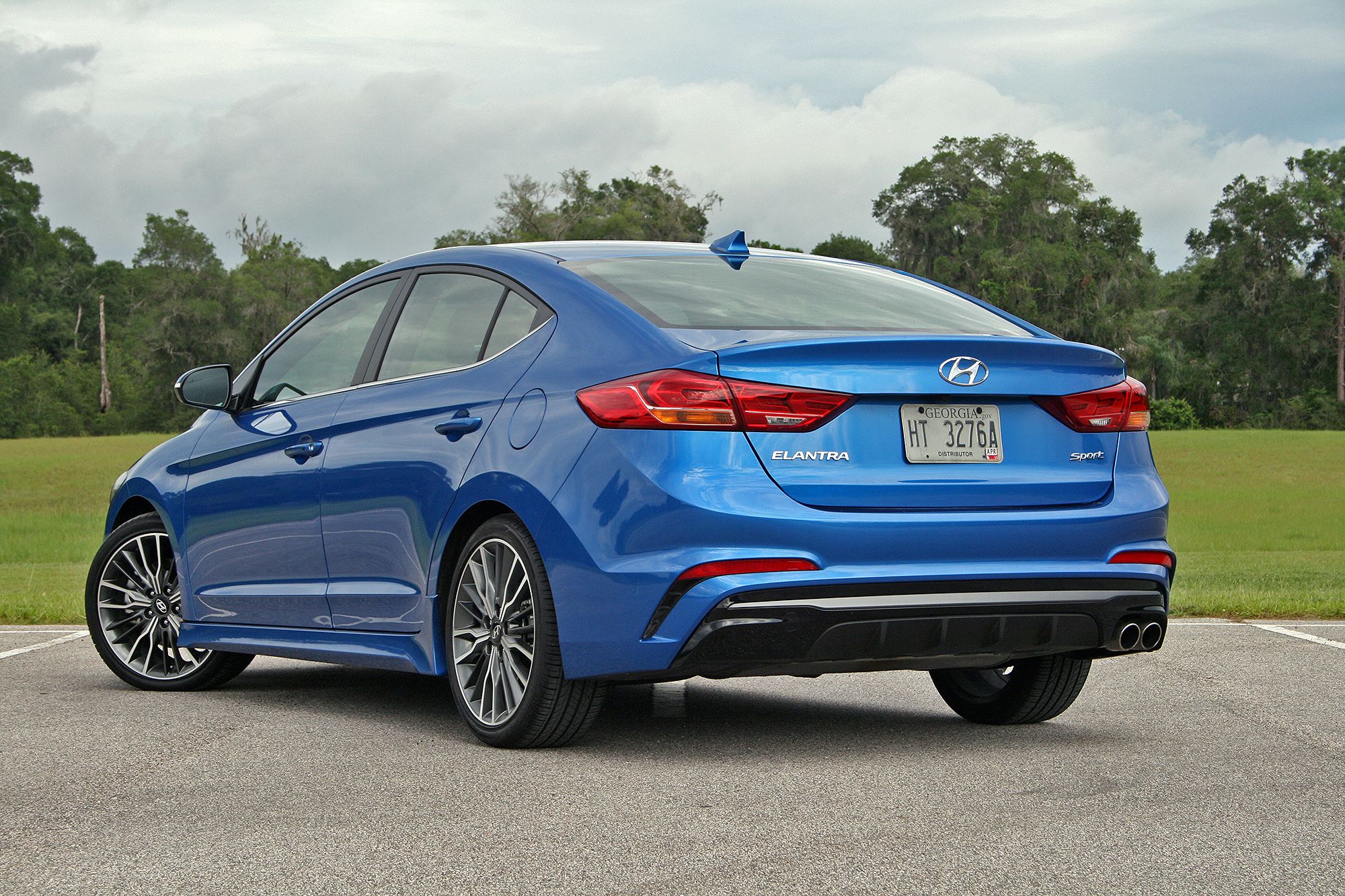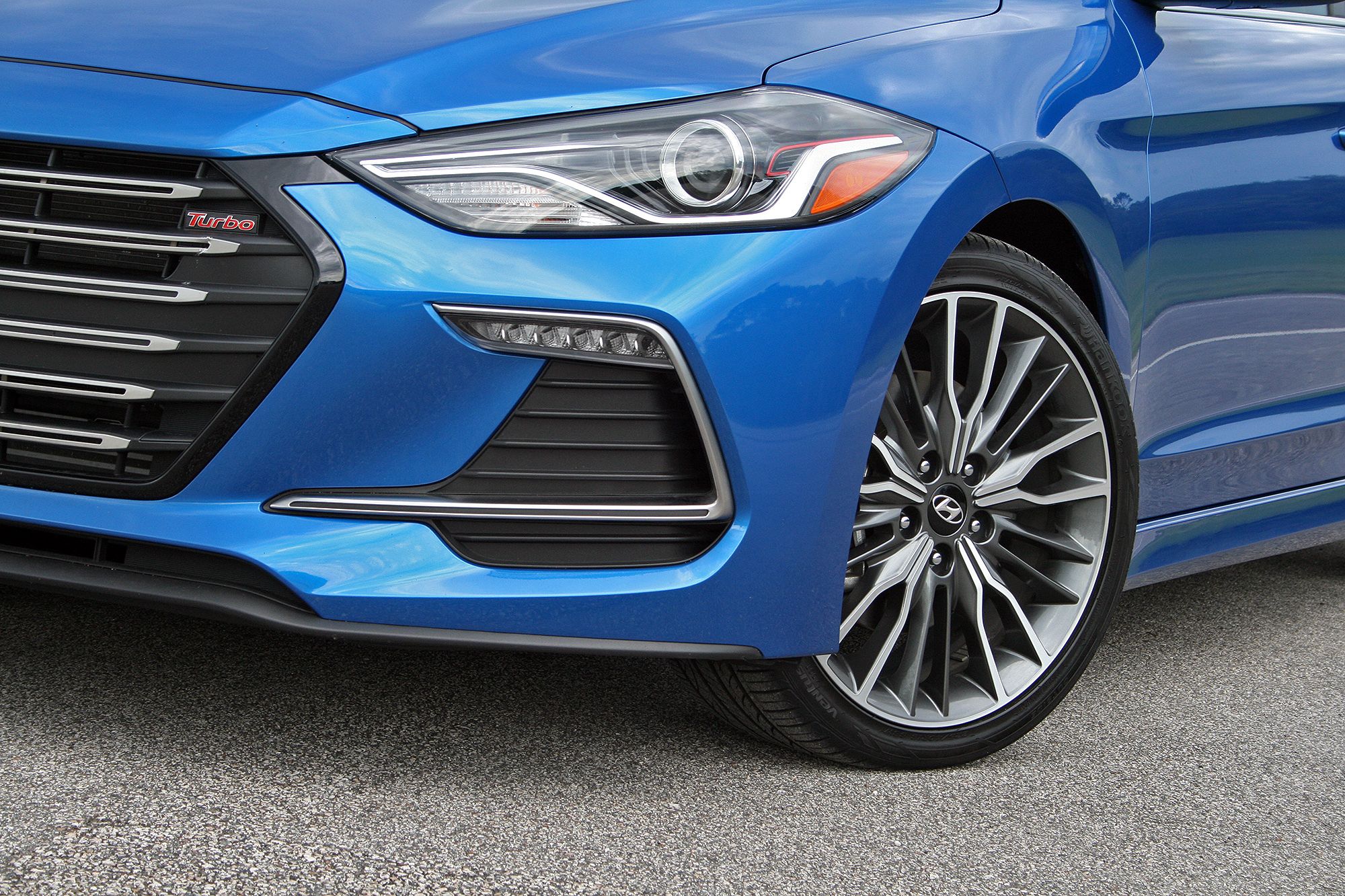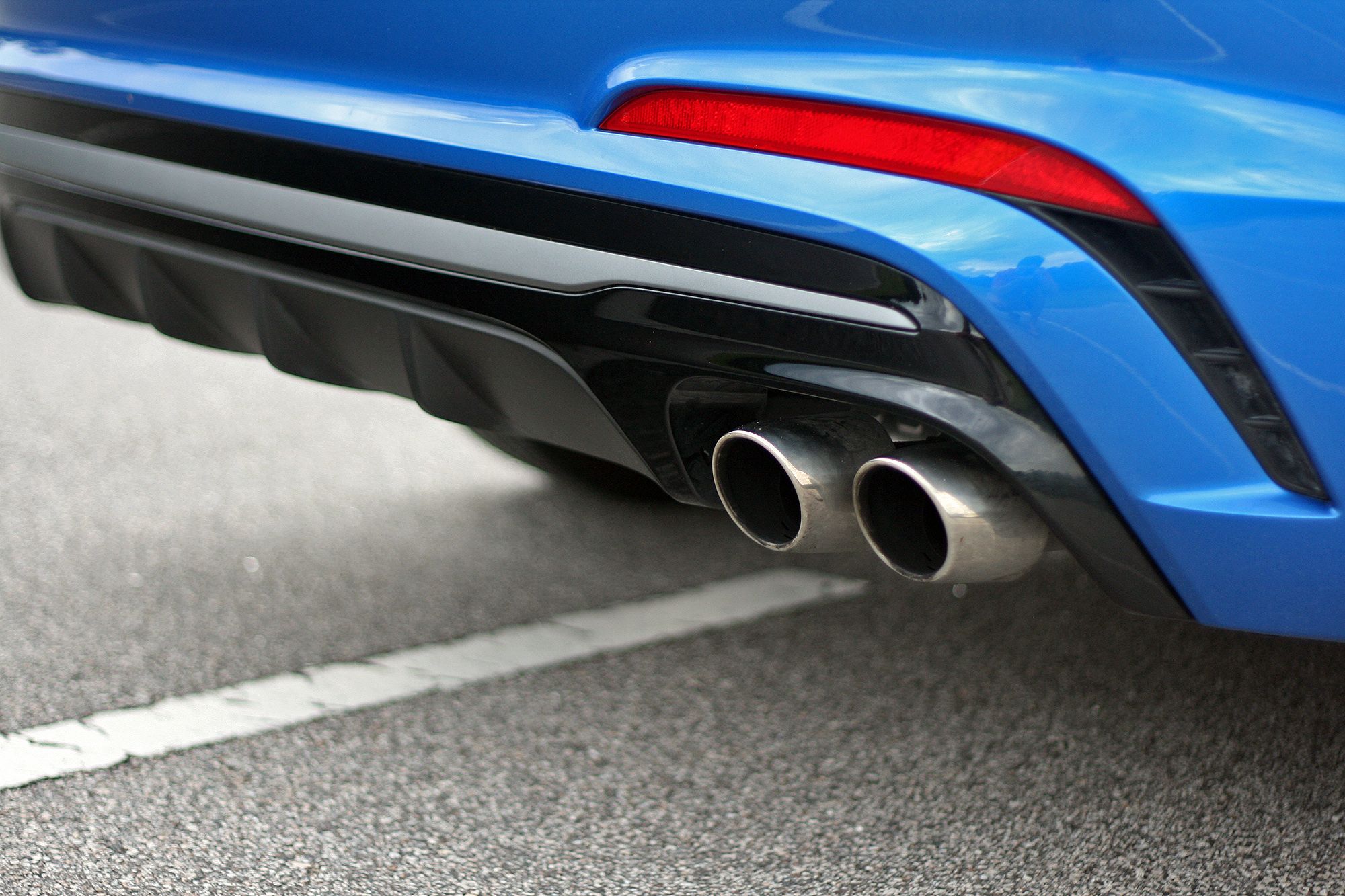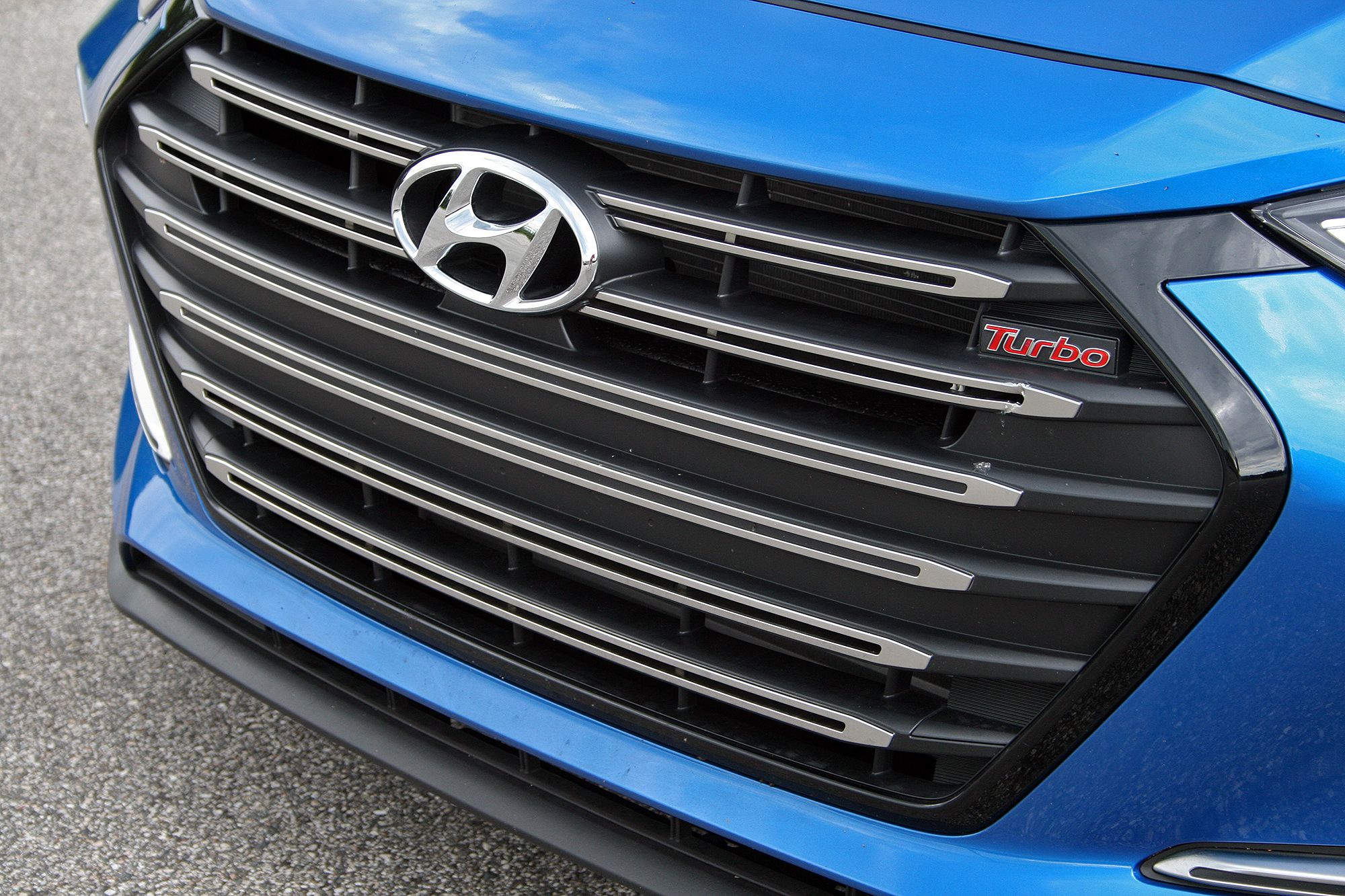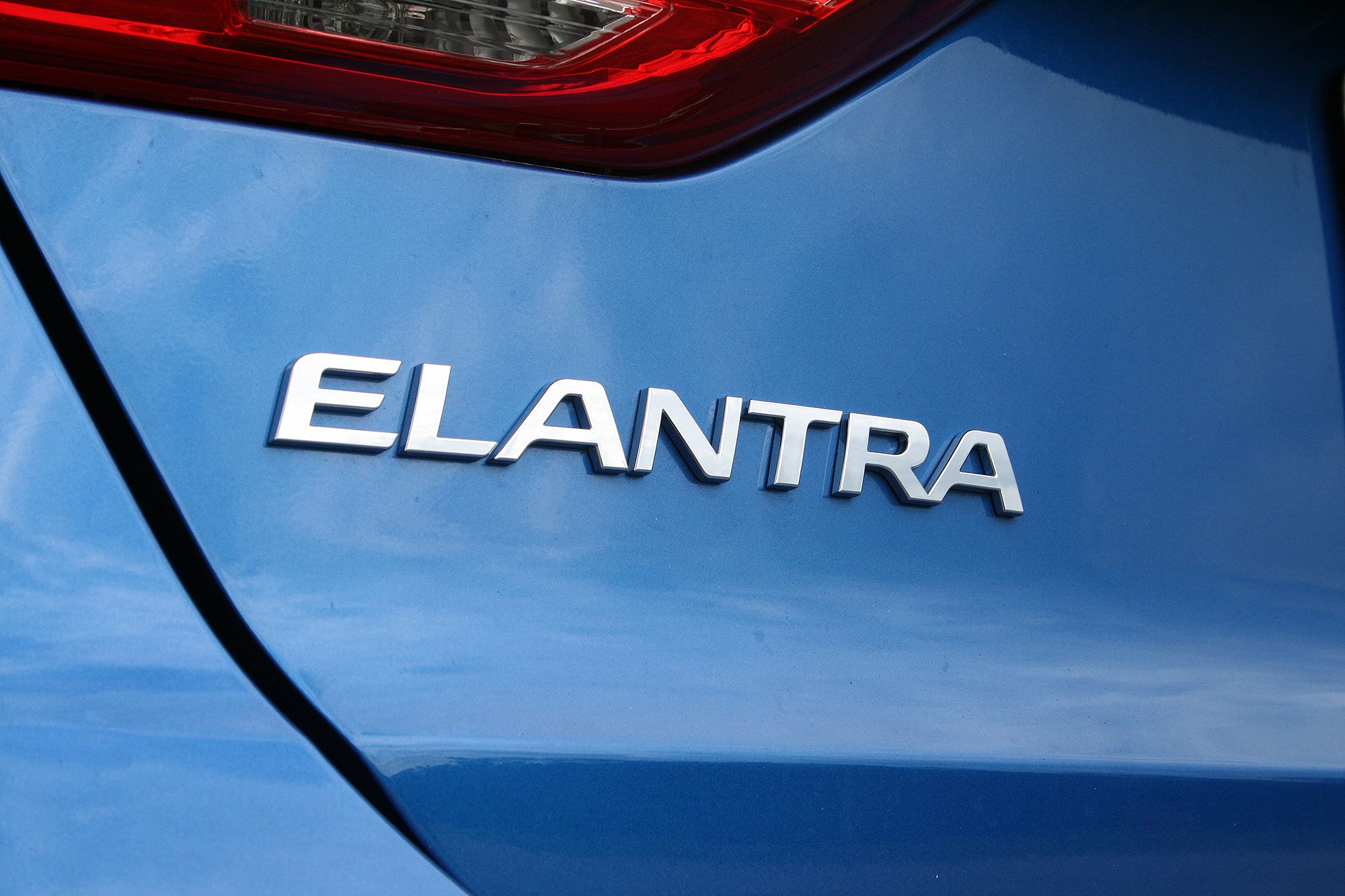The Hyundai Elantra has seen some big changes for 2017. It’s completely new, in fact, with its new chassis having more high-strength steel and structural adhesives than before, new looks inside and out, and more trim options to choose from. One of these is the Elantra Sport – a surprisingly heavily upgraded version of the Elantra that focuses on providing a fun ride without killing its everyday livability.
I’ve spent two weeks with an Electric Blue Metallic example, racking up mile around town and rolling down the interstate. I’ve hauled people, drum equipment, and groceries like any average consumer, all the while getting a feel of how Hyundai engineered the Elantra Sport to behave. But I’m leaving most of my driving impressions for the Elantra Sport’s full review. Right now, I’m looking at what makes the Elantra Sport different than its non-Sport counterparts. There’s actually some surprising differences – not just some cosmetic revamp with Sport badges slapped on.
Continue reading for more information.
More Power
The 2017 Elantra Sport dumps the standard Elantra’s 2.0-liter, naturally aspirated four-cylinder and the Elantra Eco’s 1.4-liter turbo-four. Instead, it gets a 1.6-liter turbo-four codenamed Gamma. The direct-injected engine makes a respectable 200 horsepower at 6,000 rpm and 195 pound-feet of torque between 1,500 and 4,500 rpm. That represents an increase of 54 horsepower and 63 pound-feet over the 2.0-liter. Hyundai even has a sweet, six-speed manual transmission as standard equipment in the Elantra Sport. Optionally, and like my tester, a seven-speed dual clutch automatic transmission can be had for $1,100. The DCT also brings a Sport Mode to the Elantra Sport – something oddly not offered with the manual gearbox.
Hyundai says the Elantra Sport’s exhaust borders on the pass-by sound requirements, but it’s hardly loud. The note is more on the brasher side, having a reedy, sharp sound not unlike an Audi turbo-four. Thankfully, the exhaust is never overbearing in the cabin, though it probably could be louder under hard acceleration. It’s only truly audible with the radio turned off. At that point, hints of fun noises start to appear, including blats from fast upshifts. Just don’t expect to hear overrun pops or anything. Part of the sound enhancements come via the engine’s air box. Hyundais says they’ve decreased the internal baffling to allow for more intake sound to enter the passenger space.
|
Engine |
Gamma 1.6L Turbo-GDI inline four cylinder |
|
Horsepower |
200 HP @ 6,000 RPM |
|
Torque |
195 LB-FT @ 1,500-4,500 RPM |
|
Transmission |
six-speed manual |
Upgraded Suspension
Hyundai didn’t just slap a new engine in the Elantra Sport, either. In fact, Hyundai took the unprecedented route of swapping the rear suspension – moving from a coupled torsion beam axle in the Elantra to a fully independent, multi-link rear suspension in the Elantra Sport. Think about it: while other automakers might give their cars with sporty trim levels things like upgrades shocks or stiffer springs, Hyundai completely changes the suspension’s architecture. But they didn’t stop there, either.
The front stabilizer bar is two millimeters thicker than the standard Elantra’s 22-milimeter stab bar, and the Elantra Sport gets a 15-millimeter rear stabilizer bar whereas the base Elantra doesn’t even have one. What’s more, the front springs have a 14-percerent higher spring rate and the new rear coils have a 22-percent higher spring rate than those on the base Elantra’s torsion beam axle. The Elantra Sport’s dampers are also new, providing a 30-percent stiffer ride.
Still, these changes don’t make the Elantra Sport a rough rider. The car is well composed over broken pavement and never feels jarring. Sure, it’s stiffer than the 2017 Hyundai Elantra Limited and 2017 Hyundai Elantra Eco I previously tested, but Grandma won’t complain about the Sport riding like a horse-drawn cart.
Sport-ified Interior
Aside from the big mechanical changes, Hyundai also injected some liveliness into the Elantra Sport’s interior. The sedan gets moderately bolstered front seats with red contrast stitching and a flat-bottomed steering wheel with more red contrast stitching and a red accent at the six O’clock position. Black leather comes standard, too, with matching leather on the steering wheel and a black headliner. Alloy pedal covers finish off the look.
Though also available on the standard Elantra, niceties include dual-zone climate controls, a standard seven-inch and optional eight-inch infotainment screen – both of which come with Apple CarPlay and Android Auto. There’s also a nice driver information screen in the gauge cluster. Blind spot monitoring with rear cross-traffic alert is available, too, getting bundled into the recommended $2,400 Premium Package. Also included in that package is the eight-inch infotainment screen, Infinity sound system, Hyundai Blue Link, moonroof, and that automatic dual-zone climate system.
Unique Exterior
Okay, so Hyundai also gave the Elantra Sport a unique aesthetic compared to the standard Elantra. Again, I’m thankful this isn’t the only change that constitutes the “Sport” classification on the 2017 Elantra.
Up front, the grille has different horizontal chrome bars with a red turbo badge subtlety included on the driver’s side. More significant changes happen elsewhere, including Sport-specific HID headlights and horizontal LED daytime running lights. The faux intakes are also larger than on non-Sport models, while the chin splitter enjoys a more prominent upward kink under the grille.
More bodywork changes take black in back, too, with a sportier lower fascia that includes chrome-tipped dual exhaust pipes and a faux diffuser panel and air ducts. The LED taillights also have a Sport-specific design that gives an interesting light signature at night. Last but definitely not least, the wheels are unique to the Elantra Sport. They’re 18-inchs in diameter and look far more premium than expected, and I especially like the combination of both machined and painted spokes.
Conclusion
The 2017 Hyundai Elantra Sport is a strong looker in its segment. In fact, going against its main rival, the Honda Civic Si, the Hyundai is far more mature, forgoing the boy-racer look with its grown-up styling and more premium feel. The Elantra Sport’s interior is really nice, too, though the expansive use of black does make the cabin a bit dark. However, it’s hard to complain about the ease-of-use Hyundai has cooked into the controls. Now, if Hyundai would just include HVAC vents for the rear passengers…
The Elantra Sport does live up to its name, for the most part. The 1.6-liter turbo-four is rich with torque across the power band and acceleration happens quickly for its class. The dual clutch transmission is a quick shifter, but can be clucky around town. Hard gear engagements can be a little disheartening. Sport Mode eliminates early shifts seeking maximum fuel economy, trading them for higher revs and more throttle response. Of course, you can shift yourself thanks to the DCT’s wheel-mounted paddle shifters or the +/- toggle with the shifter itself.
Handling is certainly improved over the non-Sport model, but not to the point of having Corvette levels of grip and body roll control. The Elantra Sport is simply better at handling than the standard Elantra, but isn’t some all-out autocross monster. Thankfully, that does make the car very easy to live with Monday through Friday. And the car is still plenty happy to carve canyon roads on Saturday and take granny to church on Sunday. Hyundai has built an honest all-rounder that’s easy on the senses – and the pocket – with a base price of $21,650 and an as-tested price of $26,110.
Be sure to catch my full review of the 2017 Hyundai Elantra Sport coming later this week.

